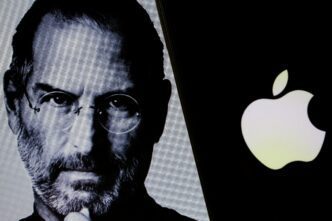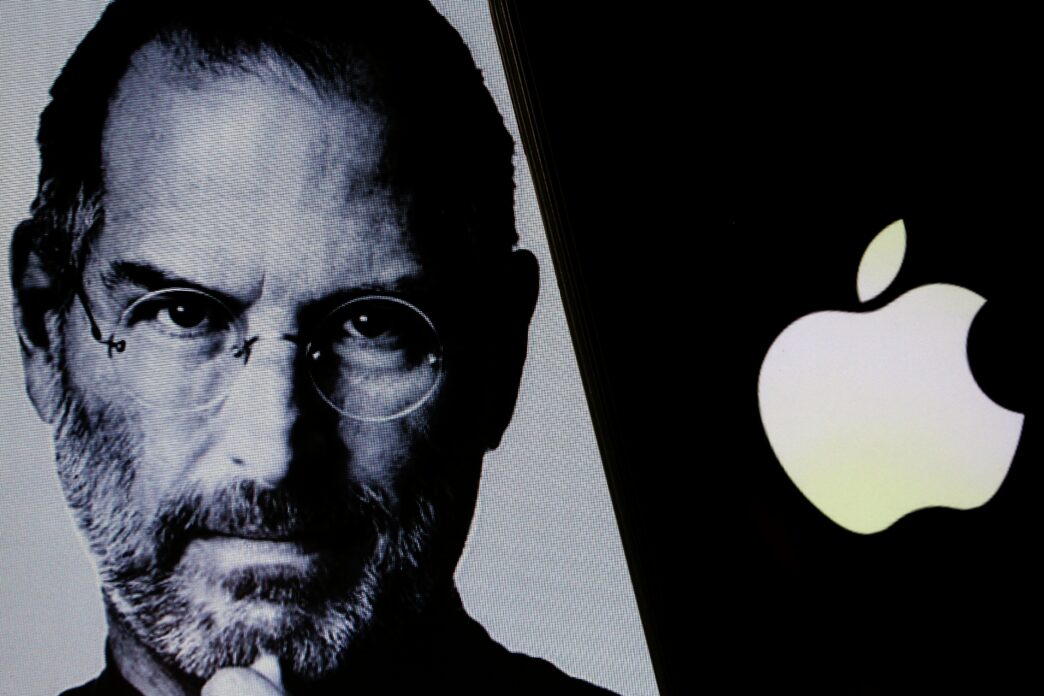Executive Summary
- Steve Jobs’ return in 1997 saved Apple from near bankruptcy through radical simplification, strategic partnerships, and the launch of revolutionary products like the iMac.
- Apple solidified its dominance by creating integrated ecosystems around groundbreaking products such as the iPod with iTunes, and especially the iPhone with the App Store, redefining multiple industries.
- Under Tim Cook, Apple has sustained growth through operational excellence and services, but now faces challenges like regulatory scrutiny and AI competition, while betting on new categories like spatial computing with the Vision Pro.
The Story So Far
- Apple’s journey from near bankruptcy to global dominance was largely driven by Steve Jobs’ return in 1997, where he instilled a vision of radical simplification and launched revolutionary products like the iMac, iPod, and iPhone, which created integrated hardware, software, and content ecosystems. This foundation of disruptive innovation and user experience has been sustained and evolved under Tim Cook, through operational excellence and a strategic pivot towards services, setting the context for the company’s current challenges with regulatory scrutiny and the ongoing search for its next major product paradigm shift.
Why This Matters
- Apple is at a critical juncture, needing to replicate the transformative innovation of the Steve Jobs era while navigating intensifying regulatory scrutiny and fierce competition in AI and maturing markets. The success of ambitious new ventures like the Apple Vision Pro will be key to determining if the company can achieve another paradigm shift and sustain its dominance, moving beyond operational excellence to define future technology landscapes.
Who Thinks What?
- Steve Jobs’ leadership was characterized by visionary product development, radical simplification, ruthless prioritization, and disruptive innovation that created new product categories like the iMac, iPod, and iPhone, fundamentally transforming industries and ensuring Apple’s initial comeback and dominance.
- Tim Cook’s leadership has focused on operational excellence, refining existing products, expanding the ecosystem, and significantly growing the services division, which has led to sustained profitability and made Apple the world’s most valuable company.
- The current challenge for Apple is whether it can replicate the “transformative magic” of the Jobs era by introducing another paradigm-shifting product, such as the Apple Vision Pro, to define a new product category and secure future dominance amidst increasing regulatory scrutiny and fierce competition in areas like AI.
Apple’s remarkable journey from the brink of bankruptcy to becoming the world’s most valuable company is a business legend, largely attributed to the visionary return of Steve Jobs in 1997. His comeback story isn’t just a nostalgic look at a tech giant’s revival; it serves as a powerful case study for any company facing existential threats, demonstrating how a clear vision, ruthless prioritization, and a relentless focus on user experience can redefine an industry and reclaim lost glory. Today, as Apple navigates a complex global landscape marked by intensifying competition, regulatory scrutiny, and the constant demand for groundbreaking innovation, the question arises: can the company, under its current leadership, replicate that transformative magic and secure its future dominance?
The Nadir and the Return of a Visionary
In the mid-1990s, Apple was in severe decline, bleeding cash and losing market share. The company had a confusing product lineup, an inefficient operating system, and a lack of clear direction, leading many to predict its imminent demise. Apple’s board made the audacious decision in 1996 to acquire NeXT, a company founded by Steve Jobs after his ouster from Apple in 1985, bringing him back into the fold as an advisor.
By 1997, Jobs had taken the helm again, initially as interim CEO. His return was met with a mix of hope and skepticism, but his immediate actions signaled a profound shift. He recognized that Apple needed not just a new product, but a complete cultural and strategic overhaul.
Strategic Revival: Simplification and Innovation
Jobs’ initial focus was on radical simplification. He drastically cut Apple’s sprawling product lines, famously challenging his team to identify just a few key products that truly mattered. This ruthless efficiency eliminated redundant projects and allowed the company to concentrate its resources on a handful of high-potential ventures.

A pivotal move was the strategic partnership with Microsoft, announced at Macworld Expo in 1997. This surprising alliance, which included a $150 million investment from Microsoft, provided Apple with crucial capital and signaled to the industry that Apple was not dead yet. It was a pragmatic decision that prioritized survival over past rivalries.
The iMac Revolution
The first major product manifestation of Jobs’ renewed vision was the iMac, launched in 1998. This all-in-one desktop computer broke away from the beige box monotony of the era with its translucent, colorful design. The iMac wasn’t just visually striking; it was designed for simplicity, making it incredibly easy for consumers to set up and use.
The iMac’s success was immediate and profound, injecting much-needed cash and enthusiasm back into Apple. It demonstrated Jobs’ belief that design, user experience, and ease of use were paramount, setting a new standard for personal computers and marking the beginning of Apple’s aesthetic dominance.
Beyond the Desktop: iPod and iTunes
Jobs understood that the future extended beyond desktop computing. In 2001, Apple introduced the iPod, a portable digital music player that revolutionized how people consumed music. While not the first MP3 player, the iPod combined elegant design with a simple interface and a massive storage capacity.
Crucially, the iPod was deeply integrated with iTunes, Apple’s music management software. The subsequent launch of the iTunes Music Store in 2003 provided a legal, user-friendly platform for purchasing digital music, creating a powerful ecosystem that connected hardware, software, and content. This integrated approach proved to be a masterstroke, redefining the music industry and establishing Apple as a major player in consumer electronics.
The iPhone Era: Redefining Mobile
The true culmination of Jobs’ vision arrived in 2007 with the introduction of the iPhone. This device wasn’t just a phone; it was a revolutionary convergence of a phone, an iPod, and an internet communications device, all controlled by a multi-touch interface. The iPhone single-handedly created the modern smartphone market and fundamentally changed how people interacted with technology.
The App Store, launched in 2008, further cemented the iPhone’s dominance by creating an entirely new economy around mobile applications. This move transformed the iPhone from a mere device into a platform, attracting developers and creating an unparalleled ecosystem of services and utilities. The iPhone’s success propelled Apple to unprecedented heights, making it one of the most profitable companies in history.
Post-Jobs Era: Tim Cook’s Stewardship
Following Steve Jobs’ passing in 2011, Tim Cook took over as CEO. Under Cook’s leadership, Apple has continued its trajectory of immense growth and profitability. Cook, a master of operations and supply chain management, has refined Apple’s global logistics, expanded its market reach, and significantly grown its services division. This strategic pivot has reduced Apple’s reliance on iPhone sales by building a robust recurring revenue stream from App Store commissions, Apple Music, iCloud, and other subscriptions.
While Cook’s era has seen a steady stream of successful product iterations and new categories like the Apple Watch, it has also been characterized by a different kind of innovation—one focused more on refinement, ecosystem integration, and sustained financial performance rather than the “one more thing” disruptive reveals of the Jobs era. This approach has undeniably made Apple the most valuable company in the world, demonstrating exceptional operational excellence.
Current Challenges and Opportunities
Today, Apple faces a myriad of challenges. Regulatory bodies worldwide are scrutinizing its App Store practices and market dominance, potentially forcing changes to its lucrative ecosystem. Competition in artificial intelligence is fierce, with rivals making significant strides in generative AI, an area where Apple has historically been more cautious. The global smartphone market is maturing, and the company still heavily relies on iPhone sales, despite the growth in services.
Opportunities, however, remain abundant. Apple’s unparalleled brand loyalty, vast cash reserves, and ability to attract top talent are significant advantages. Its foray into spatial computing with the Apple Vision Pro represents a bold bet on a new category, echoing the ambition seen with the iPhone. The expansion into emerging markets and continued growth of its services portfolio also offer substantial upside.
Can History Repeat Itself? The Search for the Next Paradigm Shift
The core question of whether Apple can reclaim its “glory” often hinges on the expectation of another Jobs-ian paradigm shift—a product as revolutionary as the Mac, iPod, or iPhone. While the Apple Watch and AirPods have been highly successful new product lines, they are arguably extensions of the mobile ecosystem rather than entirely new computing platforms.
The Vision Pro is Apple’s most significant attempt to create a new computing platform since the iPhone. Its success or failure will largely determine if Apple can once again define a new product category and ignite widespread consumer adoption, much like it did in previous eras. The company’s ability to integrate hardware, software, and services into a seamless, intuitive experience remains its core strength, a lesson learned and perfected during Jobs’ comeback.
Sustaining Vision and Growth
Apple’s trajectory demonstrates that reclaiming glory isn’t just about a single comeback; it’s about a continuous commitment to innovation, strategic adaptation, and understanding the evolving needs of the customer. While the charismatic vision of Steve Jobs was instrumental in its initial revival, the company’s sustained success under Tim Cook proves that operational excellence and ecosystem expansion are equally vital. The challenge for Apple now is to blend its proven strengths with a renewed spirit of disruptive innovation, ensuring it continues to lead rather than merely react in the ever-changing technological landscape.








